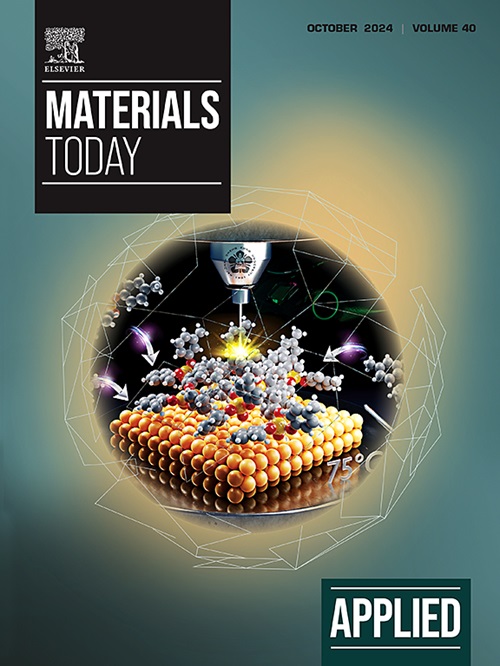Multilayer coating of a 3D-printed tracheal stent prevents tracheal stenosis
IF 6.9
2区 材料科学
Q1 MATERIALS SCIENCE, MULTIDISCIPLINARY
引用次数: 0
Abstract
Stents are hollow tubular medical devices for unblocking conduits; the most common of these are coronary stents. Stents are also used for other organs, such as tracheal stents to treat airway stenosis. However, the clinical performance of conventional tracheal stents is limited by the improper size and lack of an active drug, leading to stent mitigation and restenosis. In the current study, a customized C-type tracheal stent (C-stent) was rationally designed and precisely three-dimensional (3D)-printed to match the individual tracheal geometry. The C-stent was layer-by-layer coated with curcumin chitosan nanoparticles and hyaluronic acid (HA) by electrostatic adsorption in turn, endowing the stent with better toughness, visible monitoring, and sustained drug release. The functional layers of the coated C-stent (curcumin-loaded C-stent, Cur-C-stent) effectively inhibited MRC-5 fibroblast cells by curcumin, and remarkably promoted Beas-2B epithelial cells in the presence of HA. The curcumin was sustainedly released from the implanted Cur-C-stent and took effect at the site of the injured airway. A 3D-printed muricate stick was used to establish tracheal stenosis in rat models by scratching the inner airway wall. The implanted Cur-C-stent effectively prevented tracheal stenosis by reducing collagen deposition and inflammation, while simultaneously promoting tracheal epithelial healing and alleviating secondary lung injury. The Cur-C-stent shows great promise in preventing airway stenosis after tracheal trauma and promoting wound healing.3D 打印气管支架的多层涂层可防止气管狭窄
支架是用于疏通管道的空心管状医疗器械,其中最常见的是冠状动脉支架。支架也可用于其他器官,如治疗气道狭窄的气管支架。然而,传统气管支架的临床表现因尺寸不合适和缺乏活性药物而受到限制,导致支架缓解和再狭窄。本研究合理设计并精确三维(3D)打印了定制的 C 型气管支架(C 支架),使其与气管的几何形状相匹配。C 型支架通过静电吸附逐层涂覆姜黄素壳聚糖纳米颗粒和透明质酸(HA),使支架具有更好的韧性、可视监测和持续释药功能。涂覆 C 支架(姜黄素负载 C 支架,Cur-C-stent)的功能层在姜黄素的作用下能有效抑制 MRC-5 成纤维细胞,在 HA 的作用下能显著促进 Beas-2B 上皮细胞。姜黄素从植入的 Cur-C 支架中持续释放,并在损伤的气道部位发挥作用。在大鼠模型中,使用三维打印的榈棒通过划伤气道内壁来建立气管狭窄。植入的 Cur-C 支架通过减少胶原沉积和炎症,有效防止了气管狭窄,同时促进了气管上皮愈合,减轻了继发性肺损伤。Cur-C支架在预防气管创伤后气道狭窄和促进伤口愈合方面大有可为。
本文章由计算机程序翻译,如有差异,请以英文原文为准。
求助全文
约1分钟内获得全文
求助全文
来源期刊

Applied Materials Today
Materials Science-General Materials Science
CiteScore
14.90
自引率
3.60%
发文量
393
审稿时长
26 days
期刊介绍:
Journal Name: Applied Materials Today
Focus:
Multi-disciplinary, rapid-publication journal
Focused on cutting-edge applications of novel materials
Overview:
New materials discoveries have led to exciting fundamental breakthroughs.
Materials research is now moving towards the translation of these scientific properties and principles.
 求助内容:
求助内容: 应助结果提醒方式:
应助结果提醒方式:


